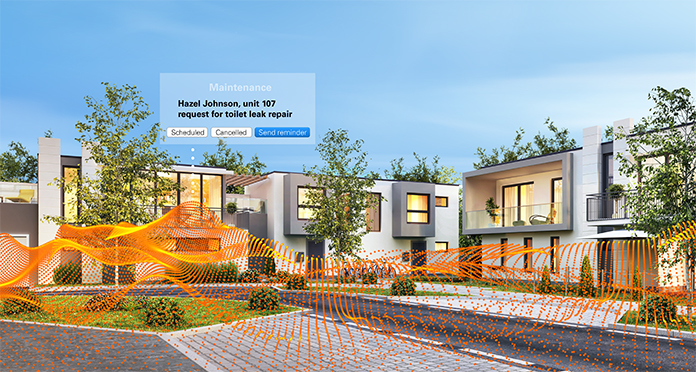
Operating an apartment community is nearly impossible without the help of property management software. Choosing the right property management software is essential.
With the property technology market bursting at the seams, how can operators determine which software best suits their needs? And from there what does the process for vetting potential vendors and solutions look like?
The basics
Property management software provides digital tools to manage the aspects of operations that matter most. Typical applications include accounting, investing, marketing, leasing, and resident tools. Without software, managing these areas is done manually, which is time-consuming and ineffective.
Some technology companies offer a unified platform that dabbles in all property management areas, enabling apartment operators to manage their entire portfolio using a single software. Other technology companies focus only on specific business functions, giving property managers the freedom to choose the best software for each respective area.
Accounting versus PMS
Regardless of company size, finding the correct configuration for accounting needs is a crucial first step as this will ultimately be the platform that drives critical business operations. In many cases, it’s also the foundational layer of technology with which all other best-in-class solutions will integrate.
Accounting software handles five important functions: general ledger, accounts receivable, accounts payable, budgeting and forecasting, due diligence.
With the option to choose between a standalone accounting software or using the features included in an all-in-one, deciding on the best platform for this function is sometimes confusing for property managers.
All-in-one versus best-in-class
All-in-one software offers expansive tools to manage an entire portfolio. This may be a good option for small companies that lack the resources to vet and manage multiple technology vendors.
However, all-in-one solutions aren’t always a one-size-fits-all option. Some property managers may find that only some pieces of a chosen all-in-one solution work as well as advertised. Depending on software weaknesses, this can lead to more time and resources devoted to certain functions. All-in-one platforms may also lack options for customization.
Companies may opt for a best-in-class software to remedy these shortcomings. This allows companies to pick the best technology for every business function. The drawback is it can be time-consuming to evaluate all options and manage multiple vendors.
Best-in-class software can also be tailored to a company’s needs. While assembling a best-in-class technology stack means dealing with several providers, upgrades are easier and the company has a unique system that sets them apart.
What to consider
Determining core system requirements sets companies up for success.
For companies that have already adopted tools, integration capabilities may be the most essential consideration when vetting a software provider. While anyone can claim to integrate with other property management systems, the nuts and bolts of the integration can make or break the user experience.
It’s also crucial to consider the implementation and support offered by a software provider. Users often complain more about their software’s customer service than the product itself, so picking tech partners with an established track record of providing top-notch support to both site teams and residents is the way to go.
Well-rounded property management software should help operators run businesses more efficiently, make work easier for staff, and allow benefits to be scaled across an entire portfolio.












